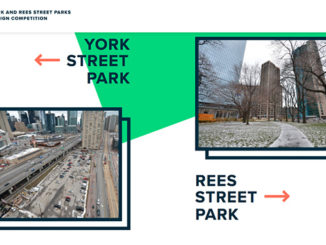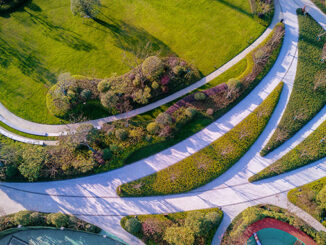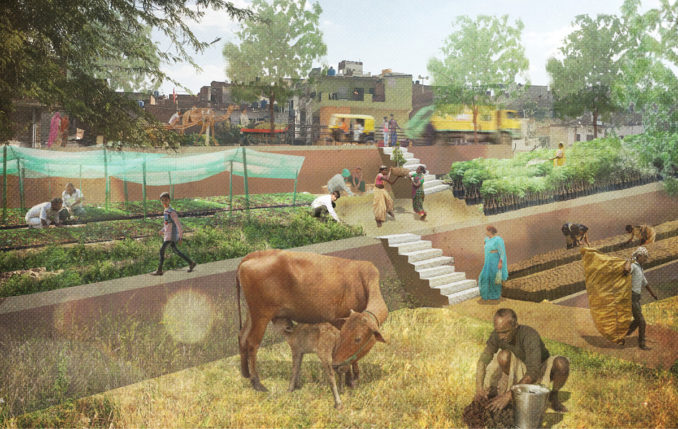
This project focuses on unfolding a space that economically supports the informal community of Ram Nagar and ecologically connects the site to a larger Indian context. It is organized primarily through the integration of a working nursery and wetland park. The project proposes a phased assembly of lively systems by creating a new metabolism in a degraded zone where the city, hills, and river meet.
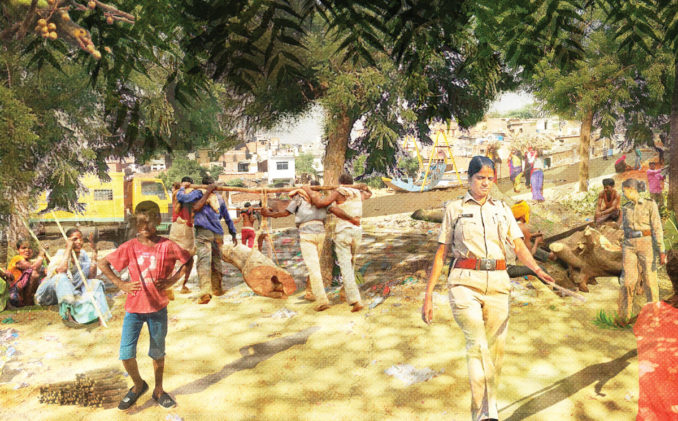
The site for this project is 48 hectares nestled at the foot of the Aravalli Hills and at the head of Jaipur’s canal, funneling seasonal monsoon and continuous waste water flows. The Ram Nagar community, in which about 12,000 residents live on the equivalent of 2-6 USD per day, has expanded into the steep slopes along the site edge.
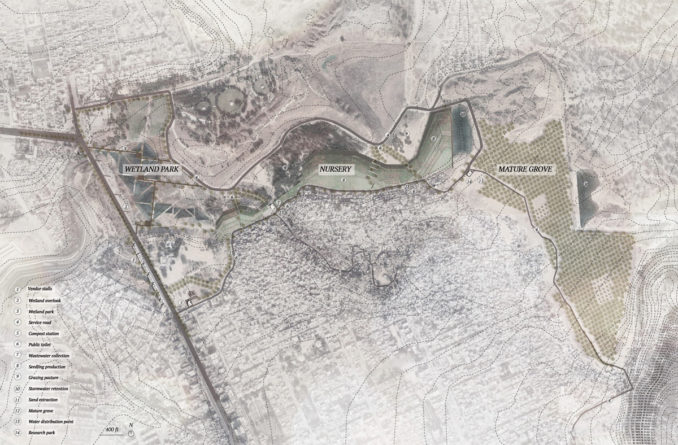
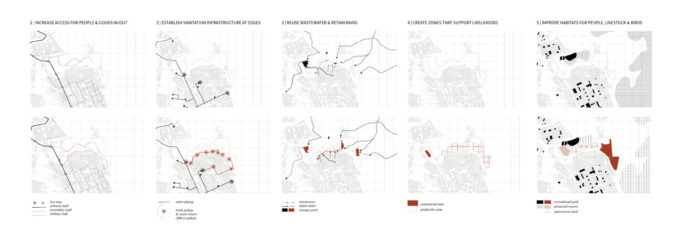
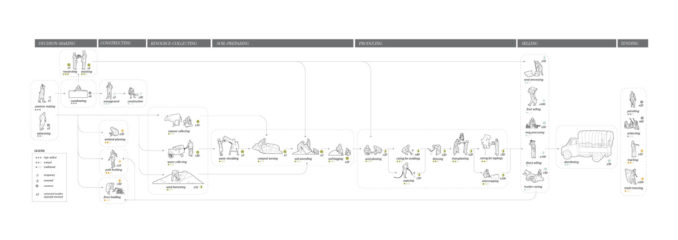
Ram Nagar Econursery and Wetland consists of five major moves. First, a 3.5 km ring road is established along the city edge to move goods and people. Second, the road enables the installation of infrastructure for water distribution and sanitation. Third, monsoon waters are retained by sculpting the existing pond and digging two new retention ponds. Wastewater is captured for reuse. Fourth, steep lands are terraced into production zones and a new market is established at the nexus of the service road and the central transportation corridor. Fifth, the project redefines occupiable zones, inviting multiple uses, varied visitors, and shared production.
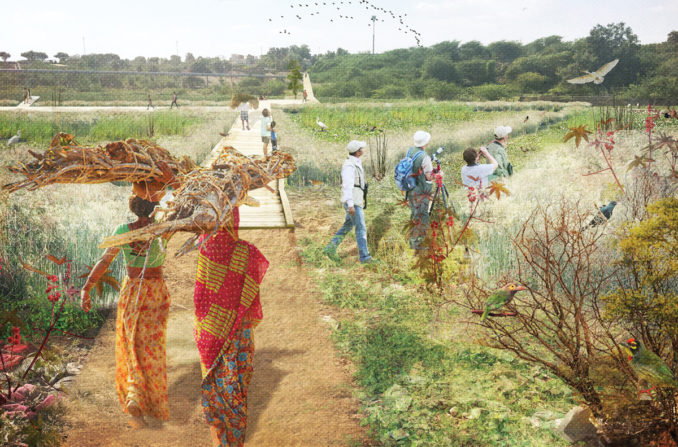
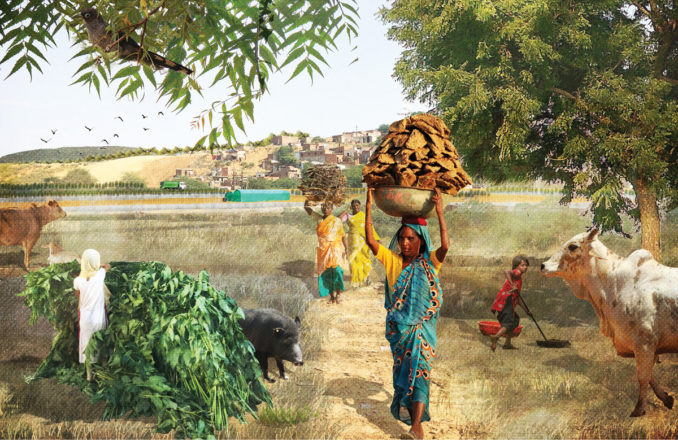
Most easily accessible to the community for daily tending are north-facing terraces that produce seedlings and saplings. These terraces are amended with sand from the hills, compost from the new trash pickup network, sludge from the wastewater collection, and manure from the surrounding grazing lands. Most seedlings will be sold for reforestation efforts, but others will be planted on the flattened region, allowing them to mature into a large communal grove used for harvest. Seasonally flooded regions remain as open grazing land, but rotational cattle exclusion barriers reduce overgrazing. This is also where manure is collected. Finally, a wetland park provides a migratory resting point along the Great Asian Flyway and builds Jaipur’s reputation as a birding tourist hotspot, increasing demand for locally-made handicrafts and services.
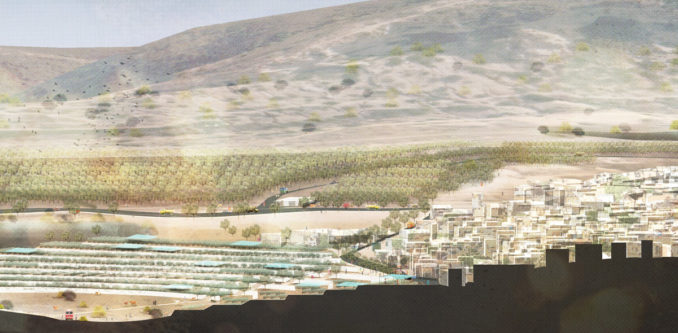
This site embraces government initiatives to manage a woodlot collectively, testing this idea within an urban space. It allows for India’s propensity to make every space a multi-use space by mixing production with inhabitation and livelihoods with tourism. This site has exceptional potential as an experimentation and legitimization ground.
Shortlisted for 2020 WLA Awards – Student – Analysts & Planning category
Ram Nagar Econursery
Student: Gaelle Gourmelon
Master of Landscape Architecture Candidate – 2020
School of Architecture, University of Virginia
Image Credits: Gaelle Gourmelon

